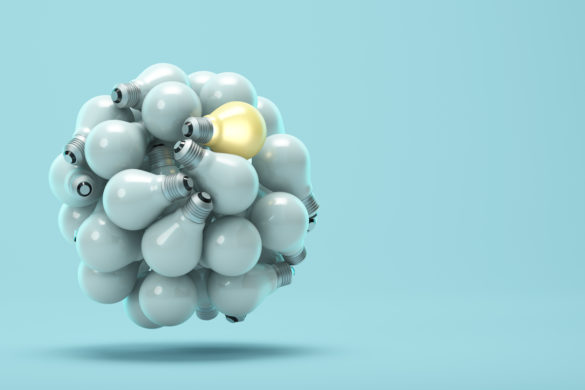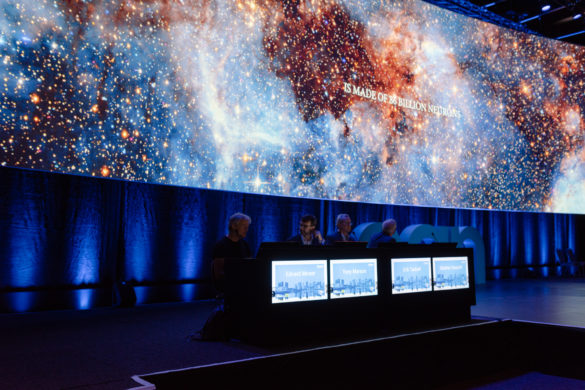by Isabella Colonna
For February we have selected two co-papers of the month, each of which examines the safety and efficacy of a specific drug in the treatment of patients with generalised myasthenia gravis.
Habib AA, Zhao C, Aban I, França MC Jr, José JG, Zu Hörste GM, Klimiec-Moskal E, Pulley MT, Tavolini D, Krumova P, Lennon-Chrimes S, Smith J, Thanei GA, Blondeau K, Vodopivec I, Wolfe GI, Murai H. Safety and efficacy of satralizumab in patients with generalised myasthenia gravis (LUMINESCE): a randomised, double-blind, multicentre, placebo-controlled phase 3 trial. Lancet Neurol. 2025 Feb;24(2):117-127. doi: 10.1016/S1474-4422(24)00514-3. PMID: 39862880.
Antozzi C, Vu T, Ramchandren S, Nowak RJ, Farmakidis C, Bril V, De Bleecker J, Yang H, Minks E, Park JS, Grudniak M, Smilowski M, Sevilla T, Hoffmann S, Sivakumar K, Suzuki Y, Youssef E, Sanga P, Karcher K, Zhu Y, Sheehan JJ, Sun H; Vivacity-MG3 Study Group. Safety and efficacy of nipocalimab in adults with generalised myasthenia gravis (Vivacity-MG3): a phase 3, randomised, double-blind, placebo-controlled study. Lancet Neurol. 2025 Feb;24(2):105-116. doi: 10.1016/S1474-4422(24)00498-8. PMID: 39862879.
Generalised Myasthenia Gravis (MG) is a rare, chronic autoimmune disorder affecting the neuromuscular junction. Approximately 10-30% of patients remain refractory or intolerant to standard-of-care treatments. Here, we summarise the results of the two phase 3, randomised, double-blind, placebo-controlled, multicentre trials evaluating the safety and efficacy of satralizumab (LUMINESCE trial) and nipocalimab (Vivacity-MG3 trial).
Satralizumab is a subcutaneously administered, humanised monoclonal antibody targeting both membrane-bound and soluble IL-6 receptors. In the LUMINESCE trial, 188 patients were randomly assigned to receive satralizumab (n=96) at 120 or 180 mg (based on baseline body weight) or placebo (n=92), over a 24-week treatment period, alongside background therapy. At week 24, satralizumab demonstrated small but statistically significant improvements in MG-ADL (Myasthenia Gravis Activities of Daily Living) and QMG (Quantitative Myasthenia Gravis) scores in AChR-antibody-positive patients compared to placebo. These improvements emerged as early as week 4 and were sustained through week 24. Satralizumab was well tolerated, with a safety profile comparable to placebo.
Nipocalimab is a fully human monoclonal antibody that inhibits the neonatal fragment crystallisable receptor (FcRn). In a previous phase 2 trial, it was associated with reductions in total IgG and AchR antibodies, as well as clinical improvements in patients with generalised myasthenia gravis. In the Vivacity-MG3 trial, 196 patients with generalised myasthenia gravis (including 153 antibody-positive patients) were randomised (1:1) to receive either nipocalimab (n=98) at an initial dose of 30 mg/kg followed by 15 mg/kg or placebo (n=98) by infusion every two weeks, in addition to background therapies. Among antibody-positive MG patients, nipocalimab, compared to placebo, was associated with a statistically significant improvement in MG-ADL and QMG total scores over six months, accompanied by rapid and sustained IgG reductions. No significant differences between nipocalimab and placebo were observed in antibody-negative MG patients. The incidence of adverse events was similar between groups, with most nipocalimab-related adverse events being mild or moderate.
In conclusion, these phase 3 trials demonstrate that satralizumab and nipocalimab are effective and well tolerated over six months in patients with antibody-positive generalised MG.










